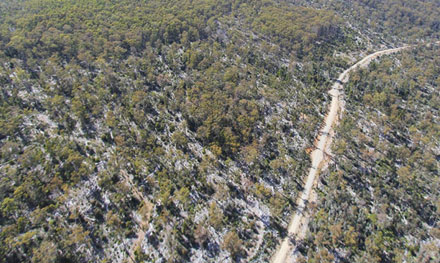
The Tasmanian forest industry is on an even keel after several challenging years, with a new report showing employment and spending have stabilised after a period of decline, and are growing in some parts of the industry. Source: Timberbiz
According to the report ‘Socio-economic impacts of the forest industry – Tasmania’ funded by Forest and Wood Products Australia (FWPA) and the Commonwealth Government’s Department of Agriculture and Water Resources, a total of 5727 jobs were generated by the industry as of 2017-18, including 3076 direct jobs and 2651 in other industries due to flow-on effects.
The forest industry directly contributed more than $700 million to the value of Tasmanian output during the last financial year, increasing to $1277 million once flow-on effects to other industries were included.
The research was conducted by the University of Canberra, in conjunction with consultancy EconSearch, a division of BDO Advisory.
Lead researcher Associate Professor Jacki Schirmer explained the key findings.
“Rapid decline in employment from 2008 has stopped, with job numbers stabilising post-2013,” she said.
“The overall stabilisation is due to two different trends, namely the decline in native forest dependent jobs during this period being offset by growth in jobs in harvesting and woodchipping of hardwood plantations.
“The forest industry remains important to many Tasmanian communities and it’s positive to see it recovering. However, growth will only continue for the longer term if there is investment in more downstream processing.”
The new report also reveals 41% of jobs depend on native forest, 33% on softwood plantations and 26% on the growing hardwood plantation sector.
Jobs are located around the state, with 38.6% located in the Southern region, 37.4% in the Northern region and 24.0% in the Cradle Coast.
Across Tasmania, the areas with the highest reliance on the forest industry for employment were Dorset with 9.3% of workers directly employed in the forest industry, Circular Head with 6.6%, Derwent Valley with 6.5%, George Town with 6% and the Central Highlands with 5.4%.
The Tasmanian forest industry generates more full-time jobs than other parts of the Tasmanian economy, with 82% of those employed in the industry working full-time in 2016, compared with 60% of the broader workforce in Tasmania.
While challenges were also reported in parts of the industry, including difficulty recruiting some types of workers, Ms Schirmer said businesses were reasonably optimistic about future demand for forest products.
“Just over half of forest industry businesses (55%) felt demand for their goods or services would grow in the next 12 months, and the remainder (45%) felt it would remain about the same. No businesses felt demand would reduce.”
The full Socio-economic impacts of the forest industry – Tasmania report is available on the FWPA website.







